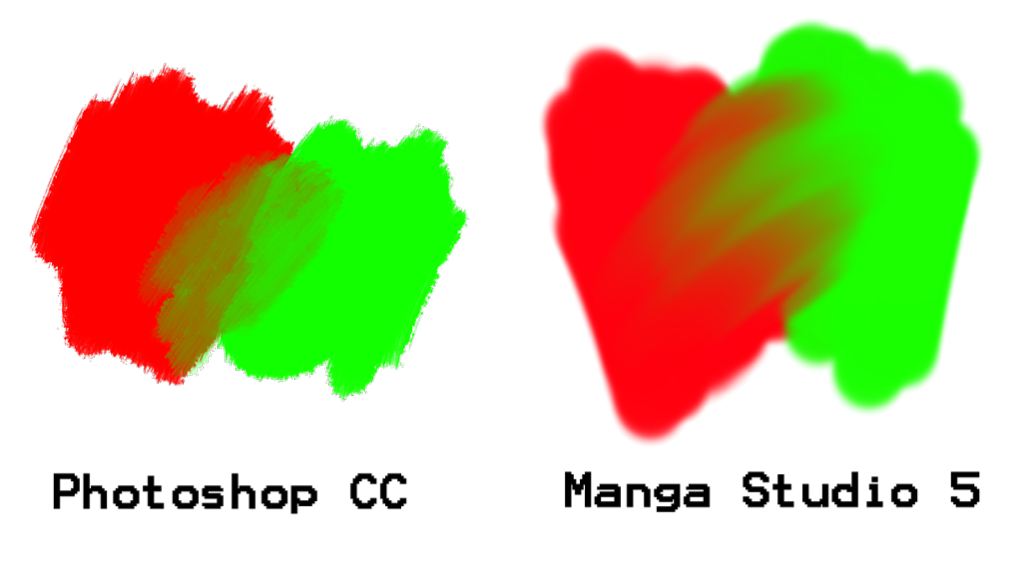The first time I tried the program was after snooping alternatives to Photoshop. Let’s not get fooled, Photoshop is still an expensive software even when they are doing interesting offers from time to time.
I saw that the price of Manga Studio was much more affordable so I decided to try it. I realized that if you are familiarized with Photoshop it is very easy to learn. It has many similarities to Photoshop, like toolbars, layers, filters … It’s hard to get lost.
The first big surprise was to test the brushes, you have a variety to choose based on what works, rather than the form. I mean, with Manga Studio I really feel that I’m facing a canvas and I’m going over it, mixing colors and hue depending on the pressure I exert on my bamboo, while on Photoshop I depended more on parameters and shapes.

To achieve this effect in Photoshop I had to use a brush which didn’t come by default and use some parameters to make a mix of both colors based on brushstrokes. While in Manga Studio, by default, I could mix colors without any problem and very quickly. For someone who comes from this traditional art form of color, it works faithfully and emulates the reality, something which I appreciate. It is true that with Photoshop you can achieve the same result, but for someone who is starting to use these programs, it will be much more accessible with Manga Studio, because you do not need to touch or change anything.
Another interesting thing about Manga Studio is how it works with ink. For those who like inking their drawings digitally, I think it really has the best tool I’ve been able to test so far. Is very well optimized and has many possibilities, like putting together vectors, displacing, simplifying or altering its thickness with just a touch. It saves a lot of time, which is to thank if you have to deliver jobs on time.
Its rules are also very practical, especially the rules of perspective with which doing a template makes it much more easier. And the rule of symmetry, perfect for designing characters or logos.
Another very interesting and strong asset is the subject of 3D. It has standard models with customizable basic characters, able to pose to help you make these complicated poses which are sometimes headaches for us cartoonists. You can open a layer on top of it and draw on a specific part. It doesn’t take so long and it doesn’t leak.
One disadvantage though about Manga Studio is that, if you were used to the brushes you could download in Photoshop and you’re addicted to its filters, you won’t have that much variety in Manga Studio. But at least you can alter the Gaussian degrading and you can alter the levels and the color curves, among others. Just enough for illustrators and conceptual artists.
As a conclusion, I must say that if you’re starting as a digital illustrator, I recommend you this program better than others, especially for its accessibility and value. It is easy to learn and you get very similar results to a canvas without actually having to go to more complicated programs like Corel Painter.
I hope this article has helped you to get an idea of what this program can offer. Later I’ll post some other tutorial to help those who need it more, Thanks for reading!
Andrés García


